The GHS Virtual Golf Museum
GHS members enjoy “Holding History in our Hands”
Included below is a small sampling of some of our members personal favorites. This list will be extensively updated once website construction is complete.


GHS virtual golf museum
1904 Olympic Golf Trophy
The first time that golf was included in the Olympics was in 1900 in Paris France. At that time, it was a rather disorganized event, though medals were awarded, and the winner of the Ladies event, Margaret Ives Abbott, was the first American woman to win an Olympic event in any sport.
The 1904 Olympics were held in St Louis, Missouri with highly organized golf events with individual and team medals and trophies. There are five known existing silver trophies (and four medals). Three are in public museums with two in private hands, one of which is pictured here (the other sold at auction for $493,777 in 2021).
Ghs virtual golf museum
Oldest Known Golf Program?
The oldest known golf program appears to be for the 1899 United States Amateur Championship. The example shown here had been the only known copy, but its GHS owner was informed that his friends at the USGA Golf Museum were gleefully able to acquire their own copy recently.
The program recounts the founding of the USGA, lists all affiliated clubs as of 1899, lists the prizes, has photos of the beautiful clubhouse at Onwentsia, rules and etiquette of golf, and more. (There is a rumor that a golf magazine of 1898 had photos of a program from 1898, but no such program has surfaced. If you know otherwise, please let us know).
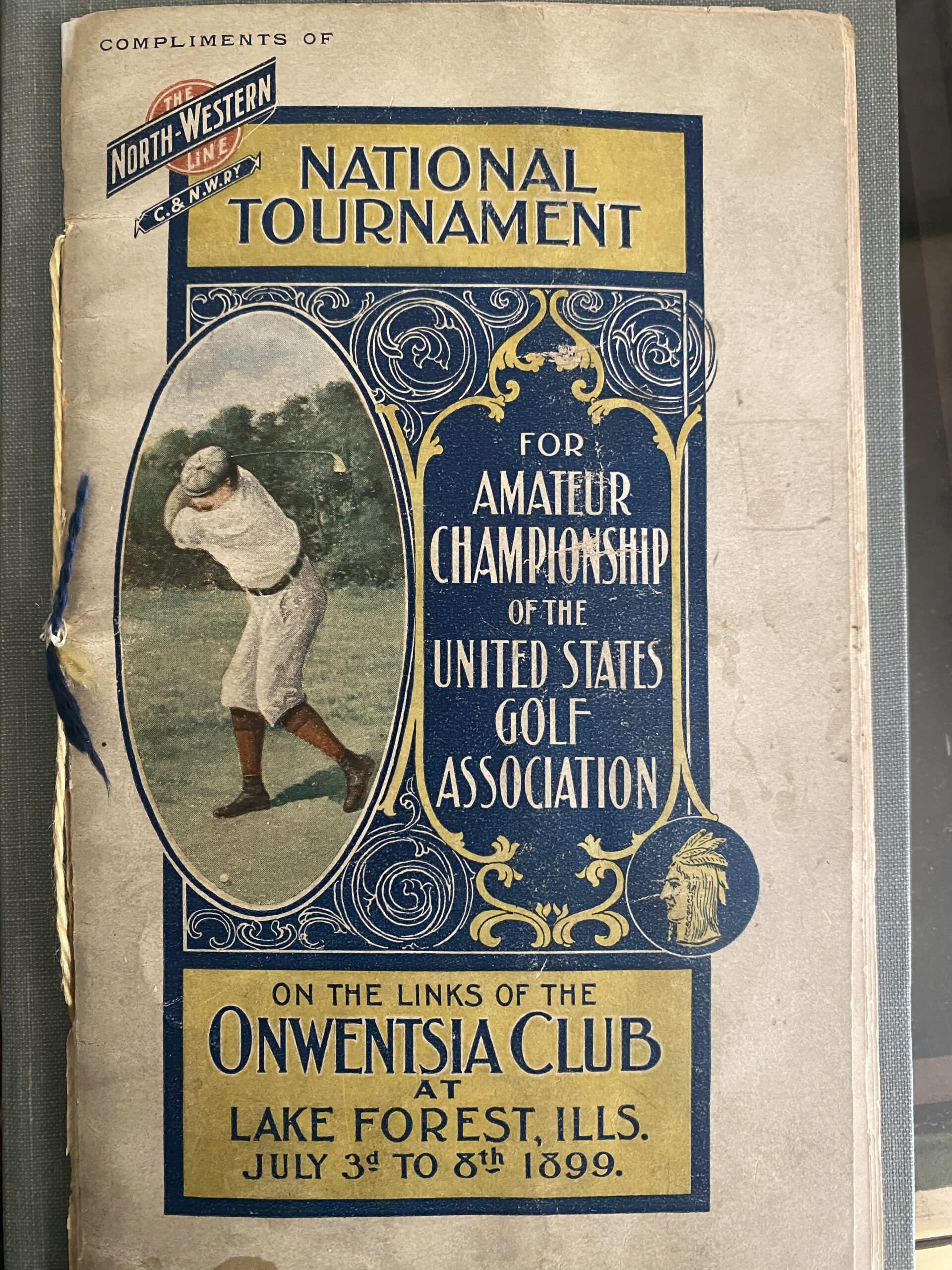
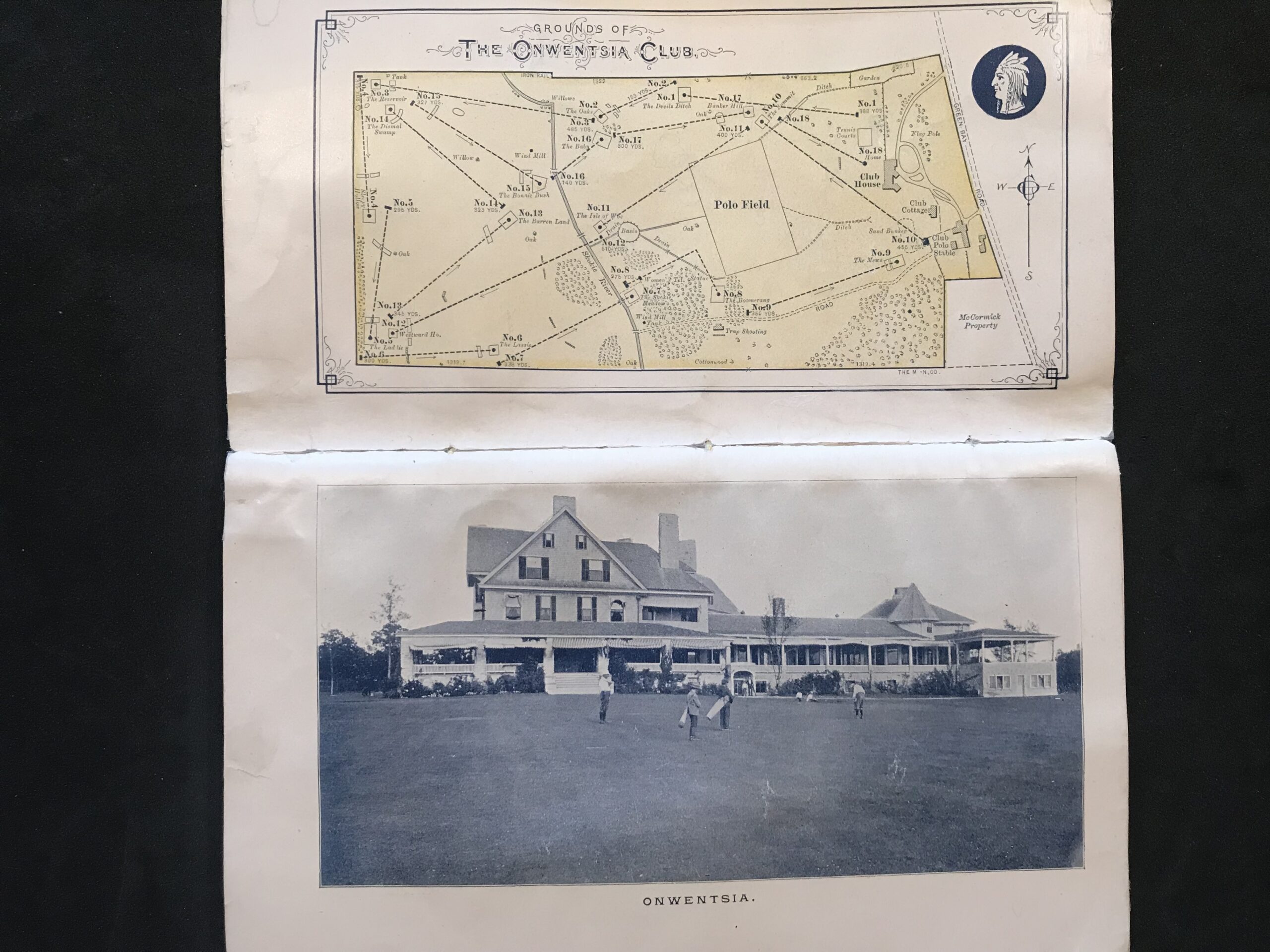
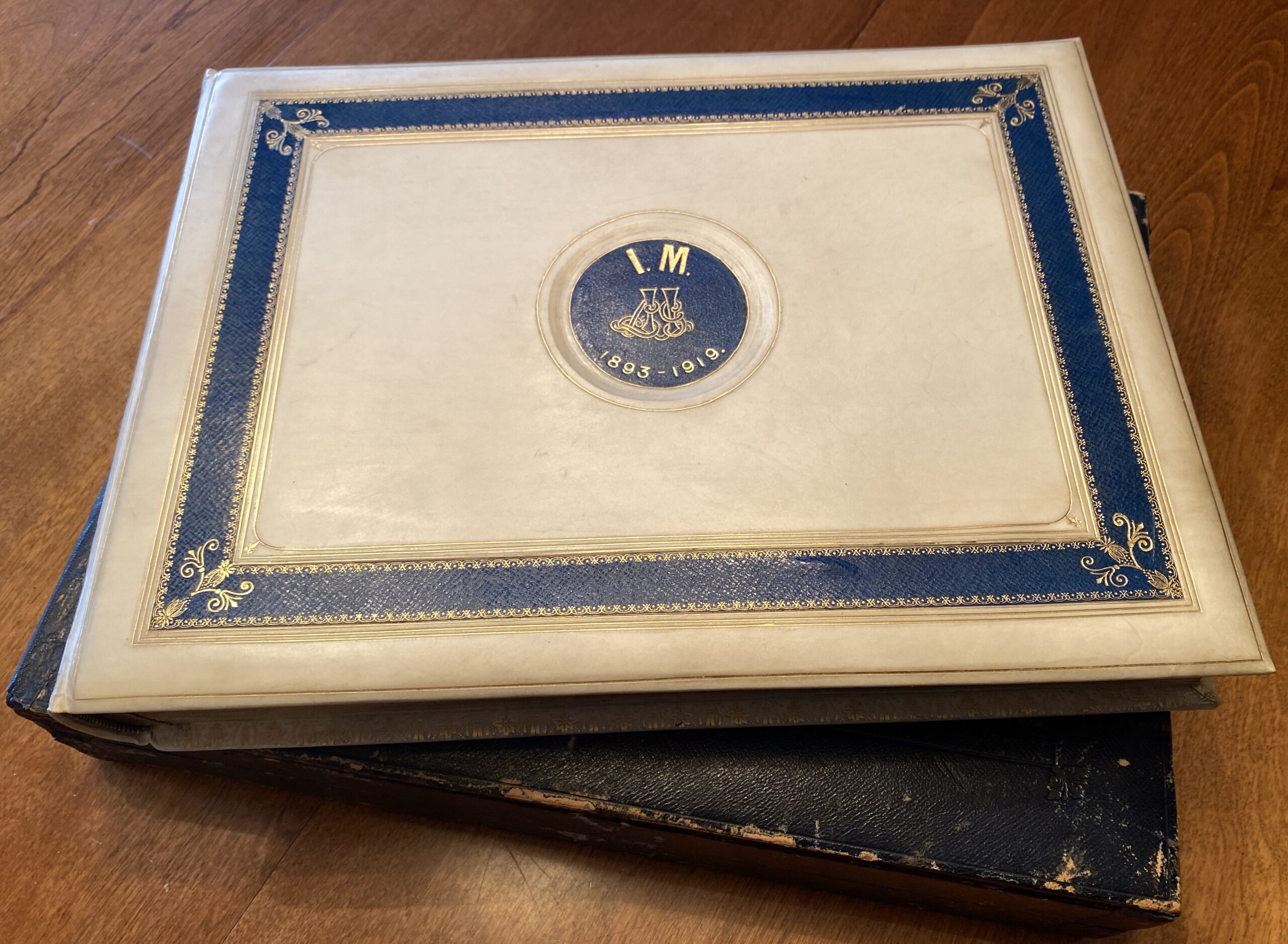
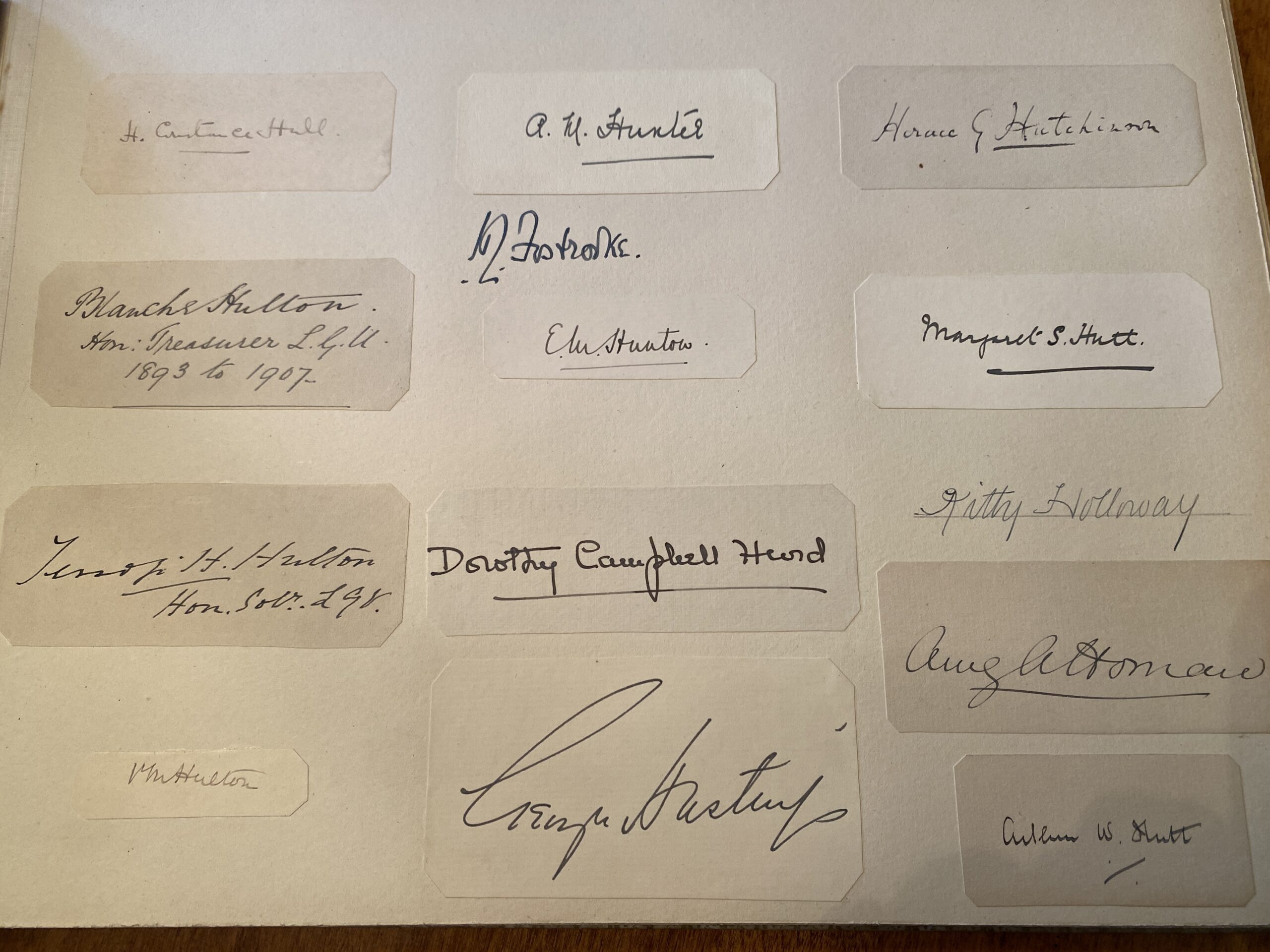
GHS virtual golf museum
Issette Pearson's Gifted Signature Album
Miss Issette Pearson (Miller) was the founder of the British Ladies Golf Union (LGU) in 1893 and its secretary for over 25 years One of her most important achievements was to develop the handicap system that allows golfers of mixed abilities to compete. She was runner up to Lady Margaret Scott in the first two Ladies’ British Open Amateur Championships.
When she formally retired from golf as an official, the LGU gave her, as her own choice, an album containing the signatures of as many of her friends as was possible to obtain. That album is pictured here. It is leather bound with 36 pages of signatures in a hard case, and includes those of most of the Champions and leading women golfers of the era. At the presentation ceremony during the LGU annual meeting, Mr. Horace Hutcheson (a VP of the LGU) gave a speech in her honor.
Also shown is one of the pages of that album which includes the signatures of Blanche Hulton, the treasurer of the LGU from 1893-1907, and Horace Hutcheson. What is ironic is that early in 1893 he had written a formal letter to Blanche about the proposed formation of the LGU, warning her that the idea was bound to fail due to the unlikelihood of women to unite without a quarrel, and that they are physically unfit for the strain of two rounds a day for the championship. He obviously reversed his opinion with the great success of the first championship later that year.
ghs virtual golf museum
Original Painting:
Hogan's Valiant Effort
The 1960 US Open was won by Arnold Palmer.
Ben Hogan nearing the end of his career and so badly wanting to gain his fifth and record-breaking US Open after a heartbreaking playoff defeat to Jack Fleck in 1955, took a chance for victory that ended in a heartbreaking defeat.
With Arnold’s charge in progress, Ben figured he’d need a birdie on the 17th hole at Cherry Hills CC in Denver, Colorado to obtain the record. It turns out that he would not have needed that birdie but here’s how things unfolded. With the pin just beyond the water skirting the front of the green, Ben decided to stick it close given that his putting woes late in his career forced him to take such chances. The ball landed near the pin but sucked back just into the water. With shoe off and with a mighty lash, the ball made the green, but bogey was had and Arnold won.
Shown is the original painting used for the front cover of GOLF magazine commemorating Hogan’s last chance at the US Open, by Lealand R Gustavson (1894-1966), a prolific practitioner of fine art and illustration for many leading publications.
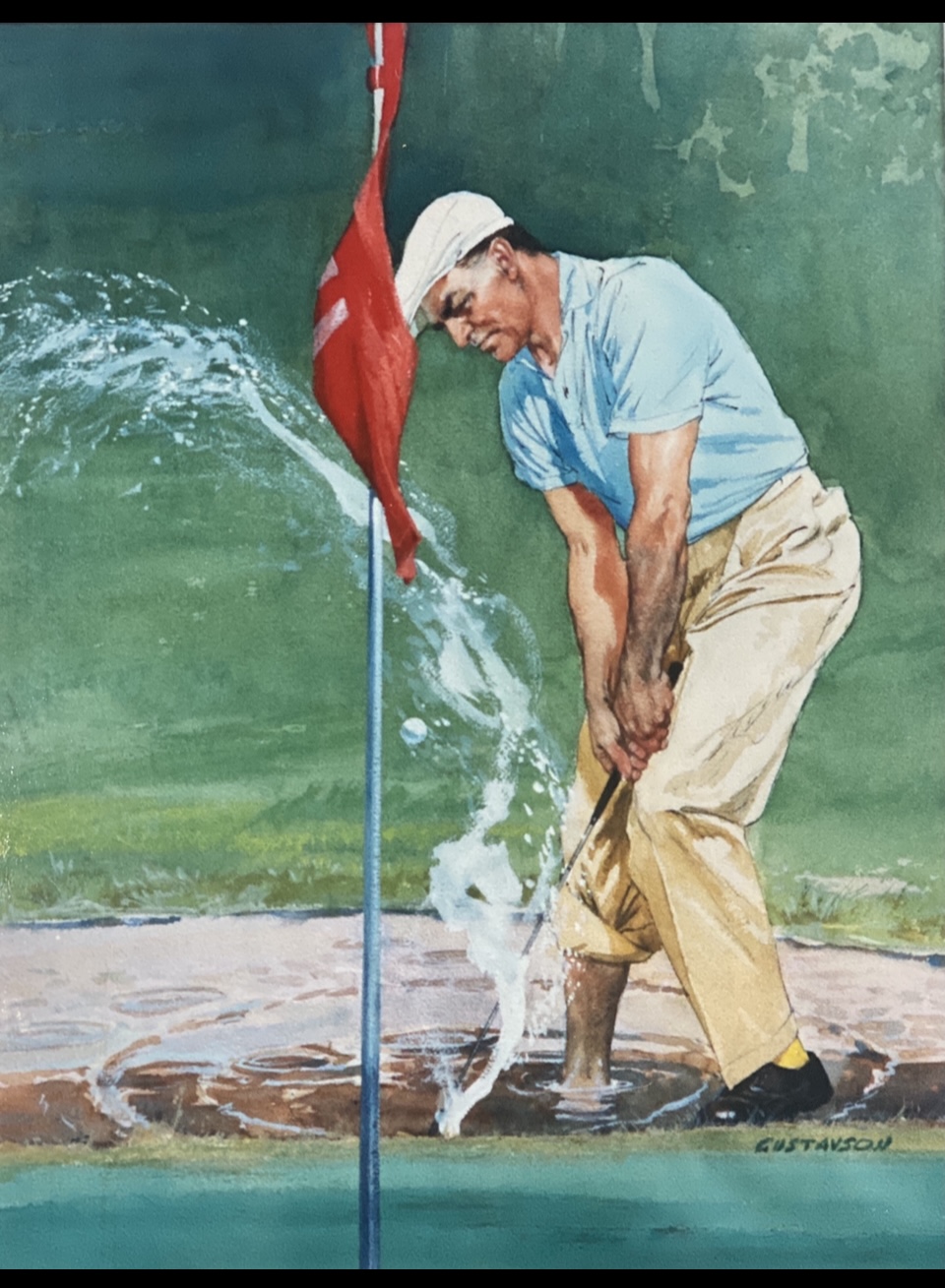
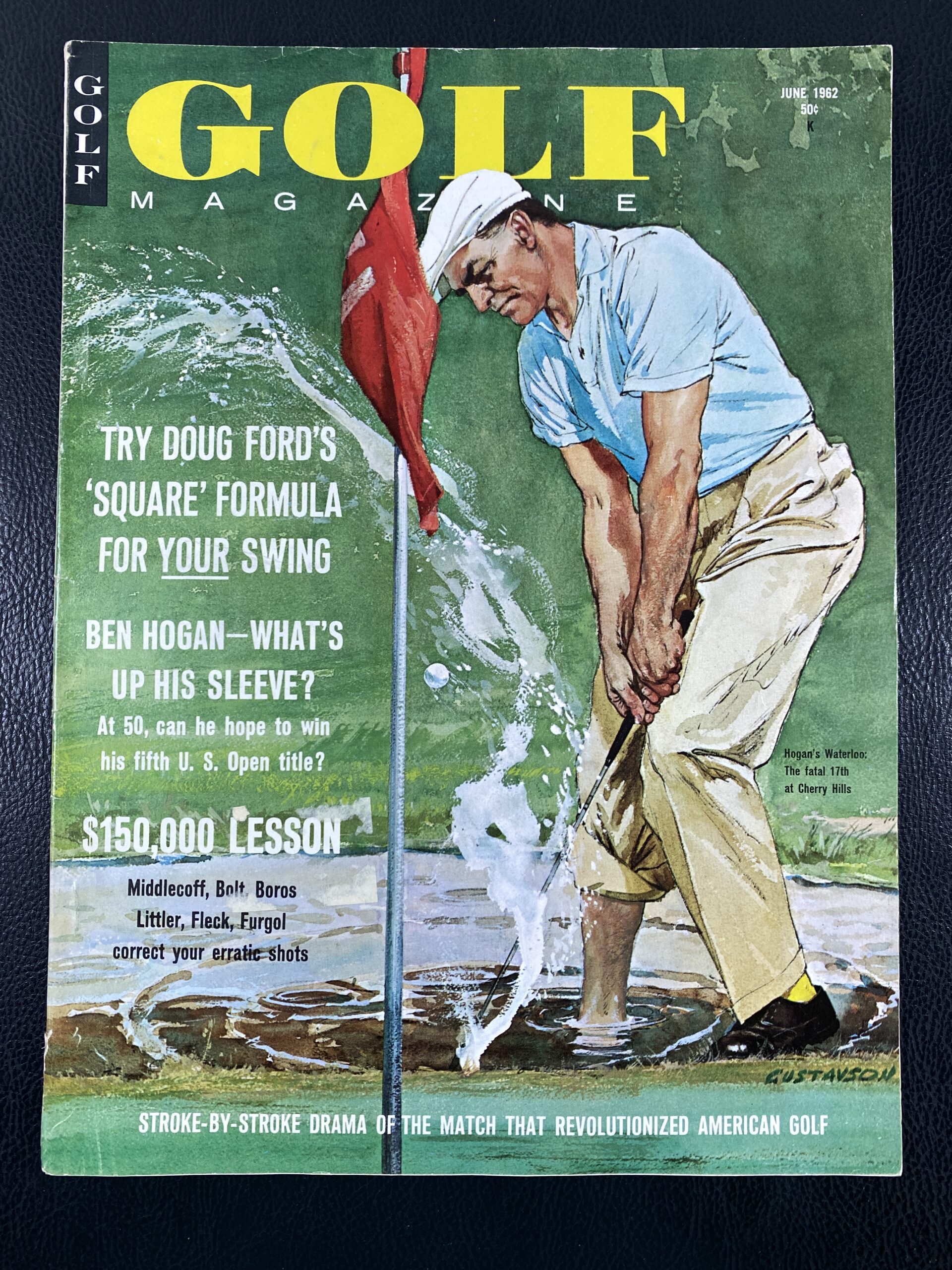
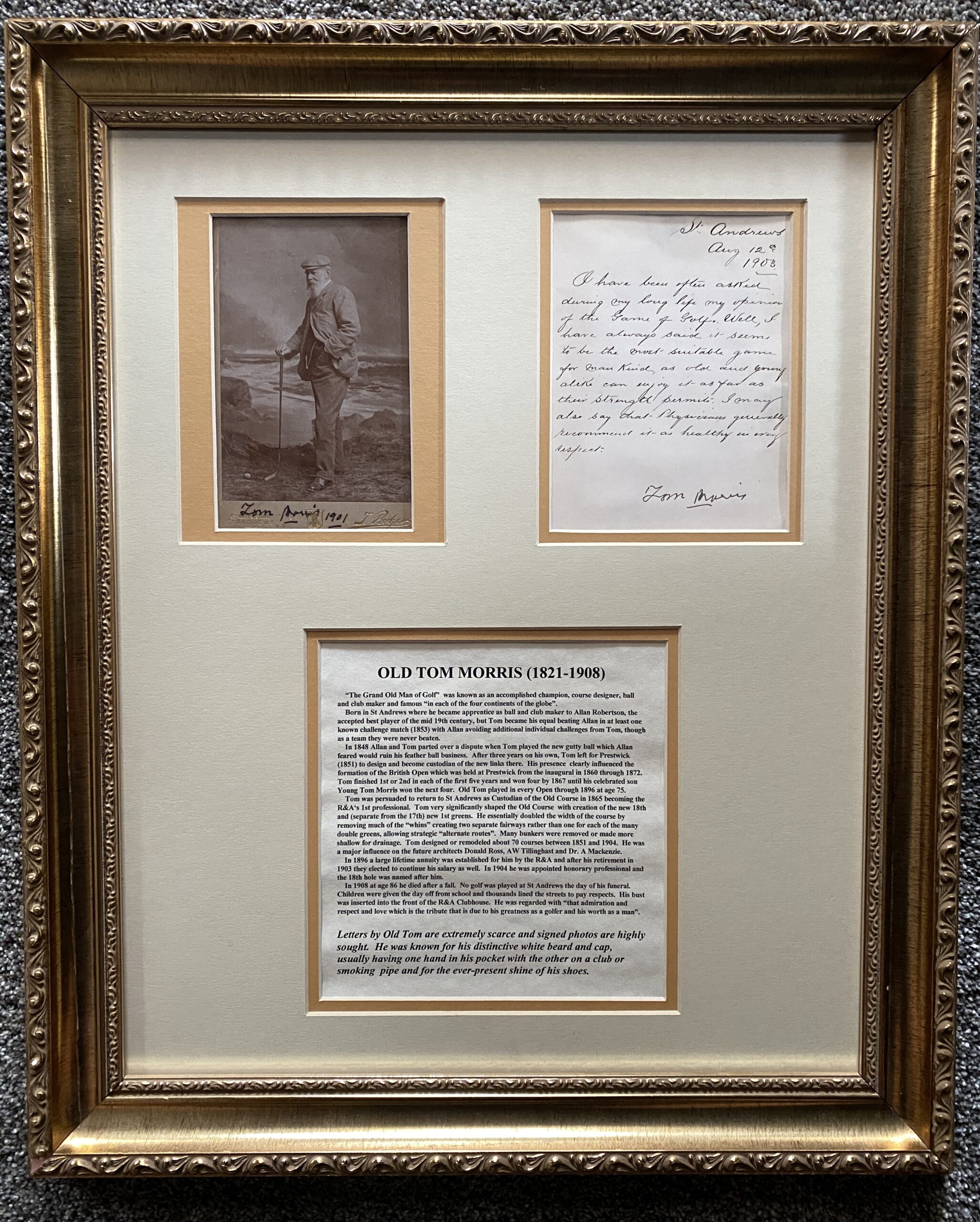
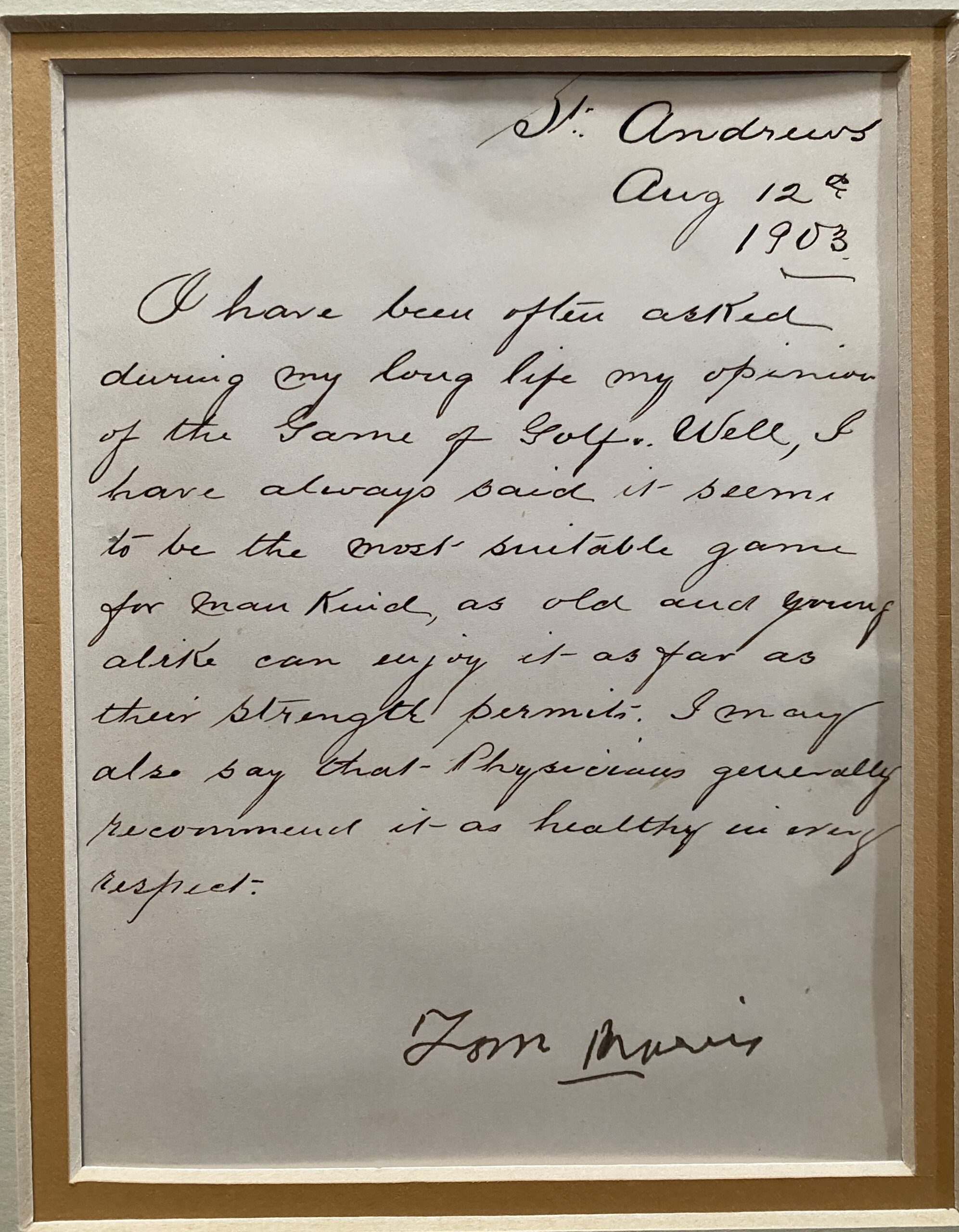
ghs virtual golf museum
Old Tom Morris
Signed photographs of Tom Morris Sr. are rare and highly sought. This J. Rogers of St. Mary’s Studio, St. Andes example (which has been reprinted in several books and posters since) has been signed “Tom Morris 1901”. He signed it on the reverse as well.
Any signed letter by Old Tom is exceptionally rare. In fact, reports state that only a single letter has been discovered that is both fully written and signed by Tom. Due to his illiteracy, the few signed examples have the content written by his son or daughter to which Tom added his signature. This letter was written for the daughter of a wealthy American businessman as they visited the UK and St Andrews in 1903.
Ghs virtual golf museum
Masters Tickets & Badges
One of the most popular examples of tournament ticket collecting is for the Masters. Many who have done so, began by saving the ticket from their first or only visit. An added challenge is to get the winner that year to sign them at some point, sometimes during a future visit. Of course, auctions are a major source for additions.
From the inaugural event in 1934 to the present day, paper tickets have been produced for daily entrance. (Sunday tickets are more highly sought than a Tuesday practice round). From 1934 through 1960, those weeklong passes were all paper tickets, but beginning in 1961, plasticized pin-backed “Badges” became available for full week entry, in addition to the daily paper tickets. The competition amongst collectors for the early tickets/badges is fierce.
Enjoy this collection which includes examples from all past years, many signed by that year’s winner.
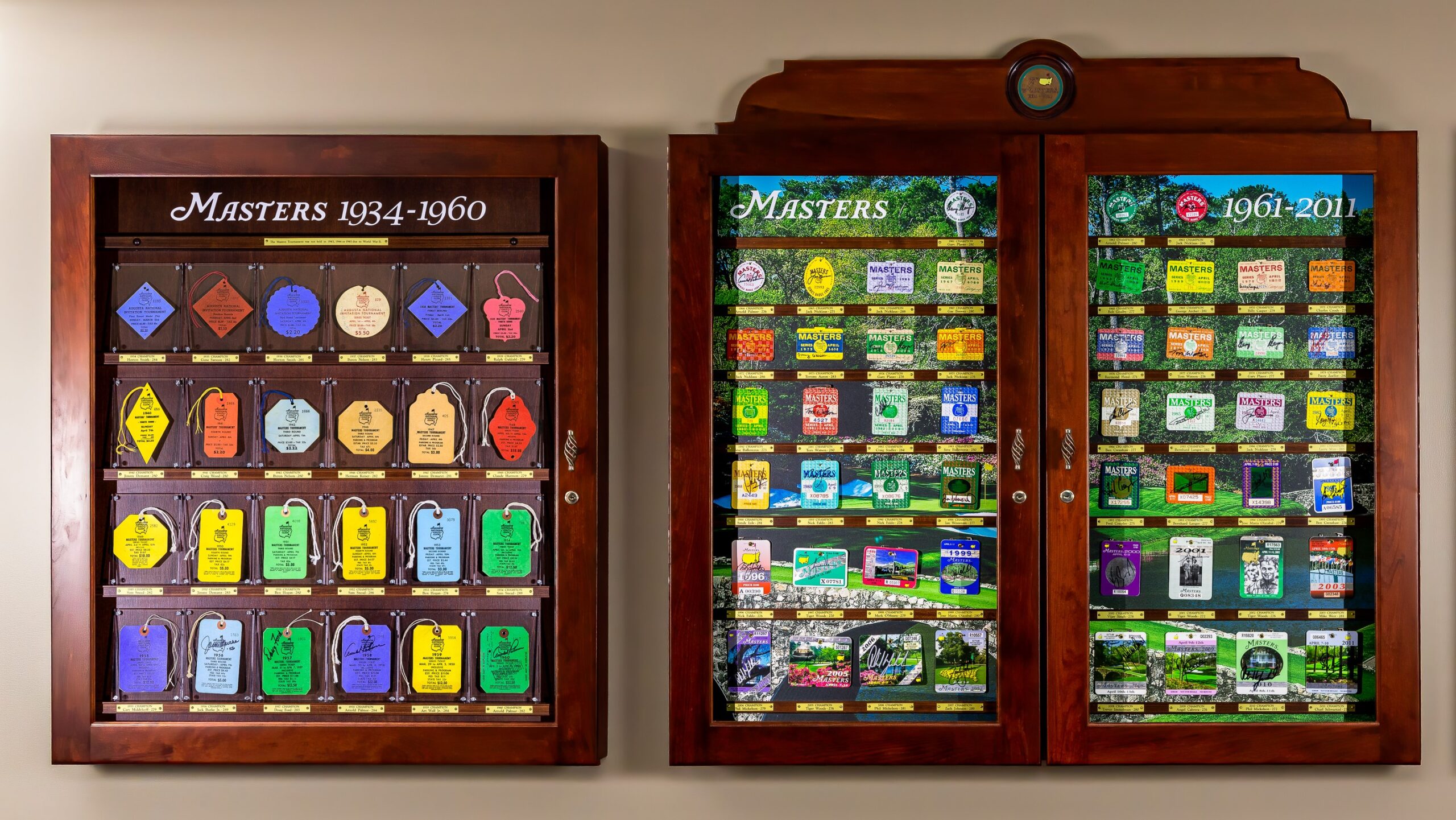
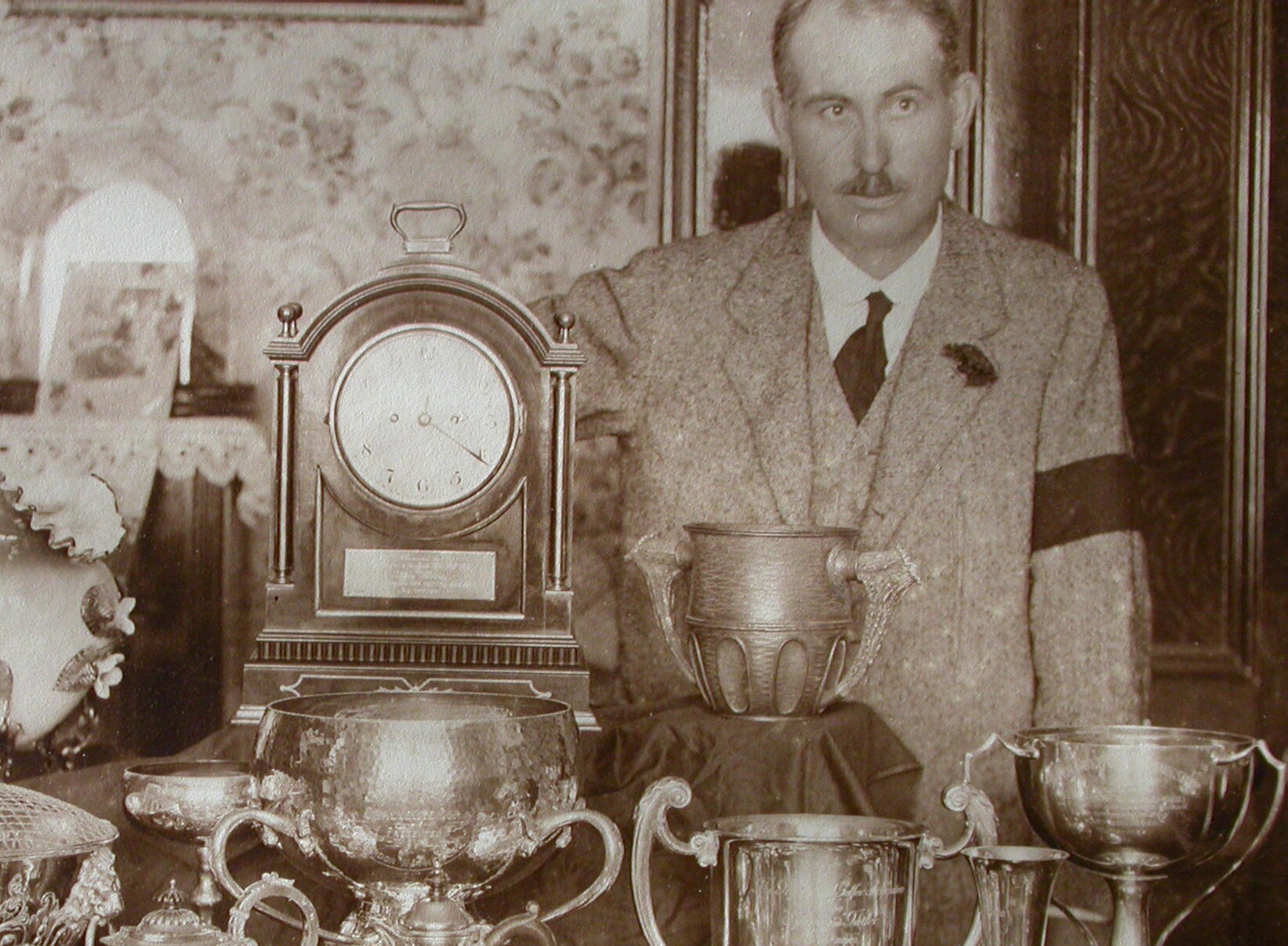
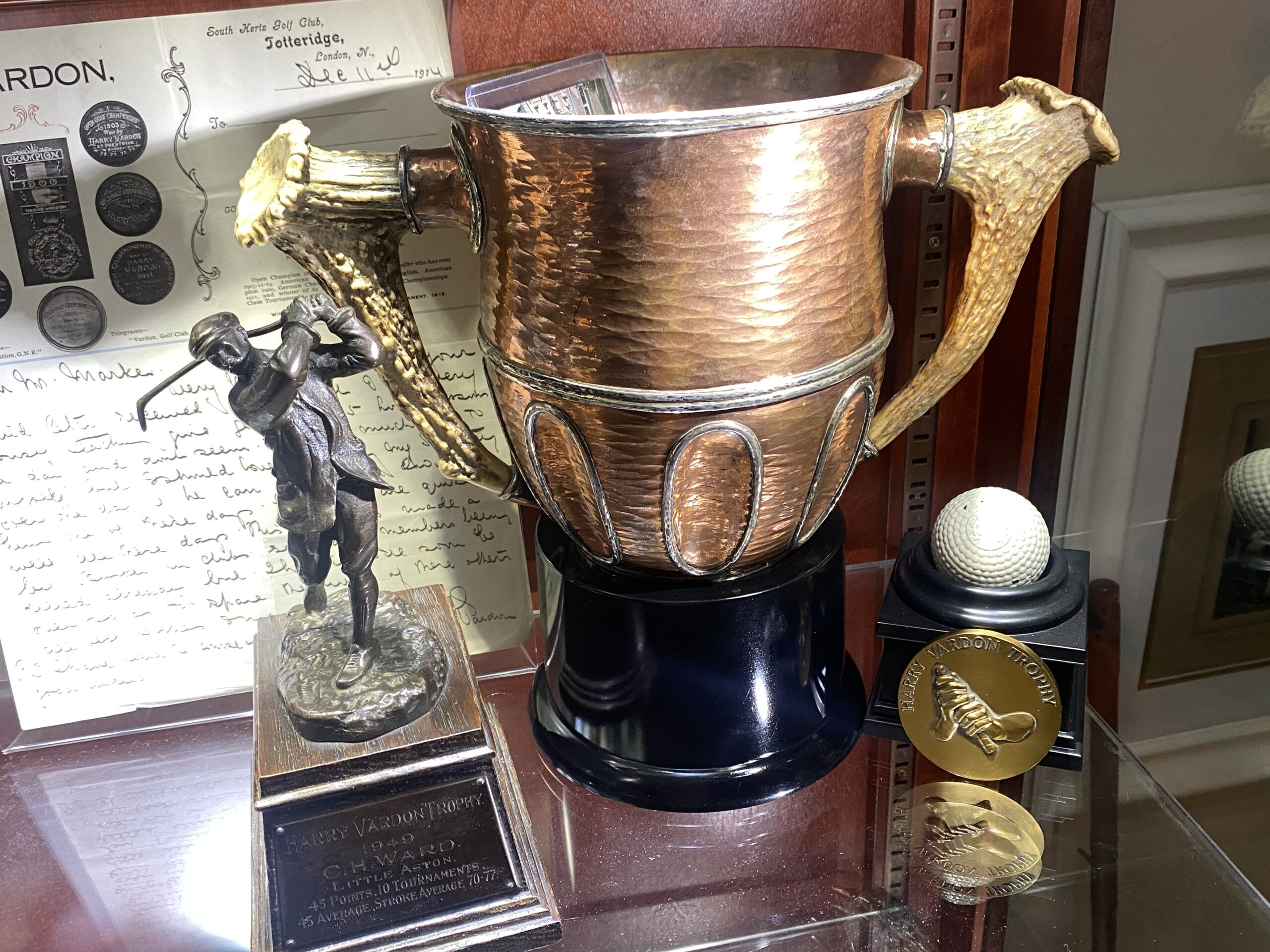
GHS virtual golf museum
Harry Vardon's 1900 US Tour
Harry Vardon was enticed by the Spalding company to tour America in 1900 and promote their new Vardon clubs and Vardon Flyer golf ball. While on that trip he won the 1900 US Open and nearly all of his numerous exhibitions matches between February 12th and December 10th, often against the better ball of two top players.
One of those exhibition matches was in Poland Springs, Maine on August 25th, where Vardon defeated the pair of Alex Findlay and Arthur Fenn, 4 and 2. Newspaper Articles recounted Vardon’s warm reception there saying that after the match, “Vardon entered the great hall to cheers, followed by speeches and then the singing of “God save the Queen” and the “Star-Spangled Banner” to the delight of the guests of the hotel”, who then awarded him this American styled copper/silver trophy with deer antler handles. This appears to be the only trophy awarded to Vardon on his American tour. It is obvious from the photo taken years later in Vardon’s own home, how much that reception meant to him, as he displays it prominently amongst his other awards.
The book “The Vardon Invasion- Harry’s Triumphant 1900 American Tour” by Bob Labbance with Brian Siplo, is a wonderful account of the tour that sparked even greater interest and advanced the growth of golf in America.
Other items on the display shelf include: a letter on Vardon’s famous stationary, a Vardon Flyer ball, a “Vardon Trophy” medal (featuring Vardon’s famous grip) for the PGA Tour’s leader in scoring average for the year, and a “Harry Vardon Trophy” statue (by Hal Ludlow for Elkington & Co.) for the European Tour’s low scorer.
Ghs virtual golf museum
Super-Giant
Niblick & Mashie
The usual “giants” produced intermittently by several different makers between about 1905 and into the 1920’s were only moderately larger than regular irons and were playable. They are not uncommon but have wonderful appeal.
Club expert Jeff Ellis proposes that a true “giant niblick” has between 3 1/4″ and 3 7/8″ of face depth at its deepest point, while a Dreadnought niblick or Junior Mammoth Niblick is usually between 2 1/2″ and 3″ tall. In person, super-giants look more and more massive with even small incremental increases in size. Giant Niblicks are more common than giant irons and putters.
Pictured here, flanking Titleist’s newest Vokey SM10 wedge, are a super-giant niblick made by J. P. Cochrane which measures over 4 1/2″ tall and 5 3/4″ long, and a super-giant mashie of extreme weight, made by W.L. Ritchie measuring 3 3/4″ tall and 5 1/2″ long.
Some believe that such rare, true giants, are so unwieldy that they may have been for sales display or to demonstrate a maker’s craftsmanship.
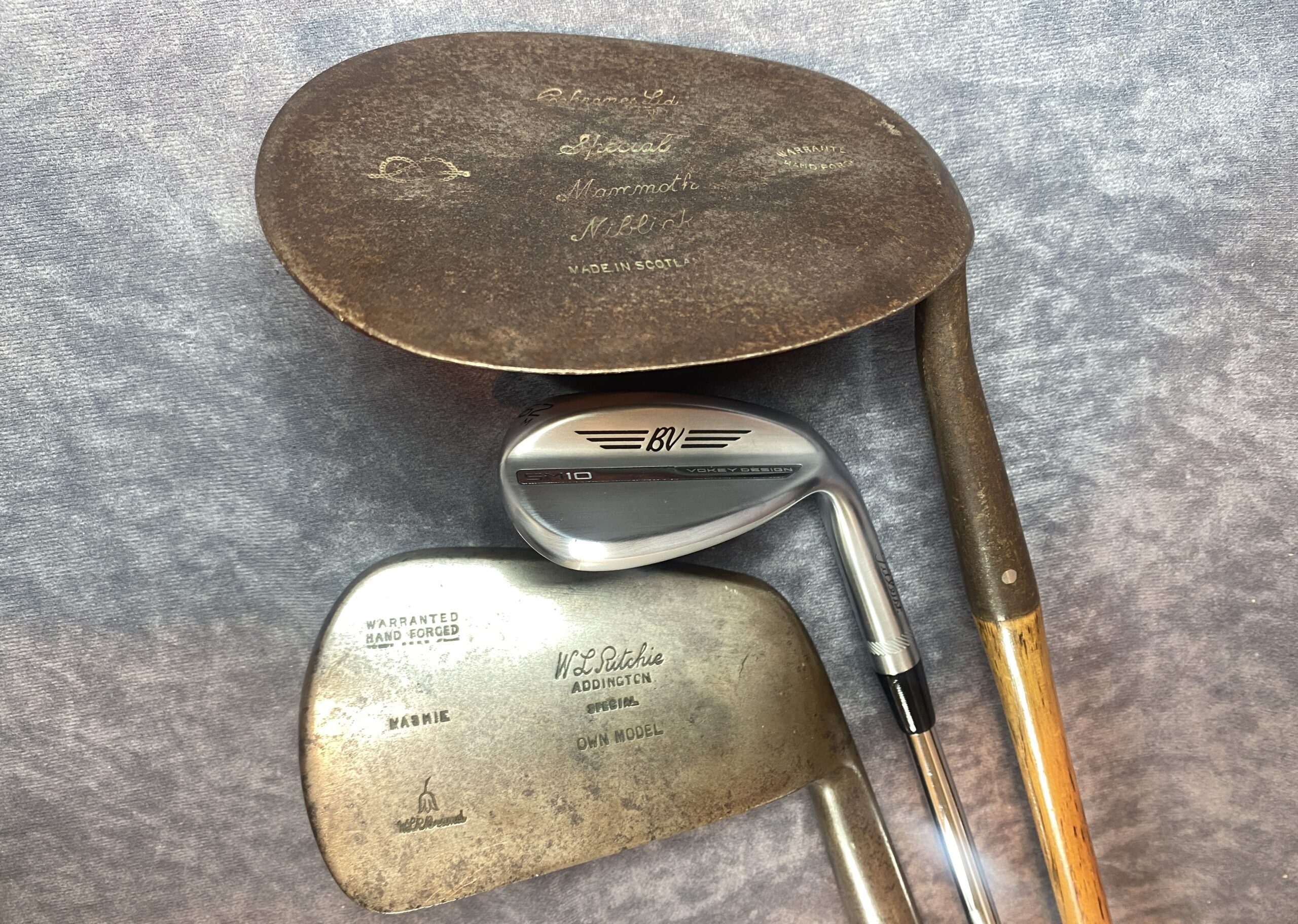
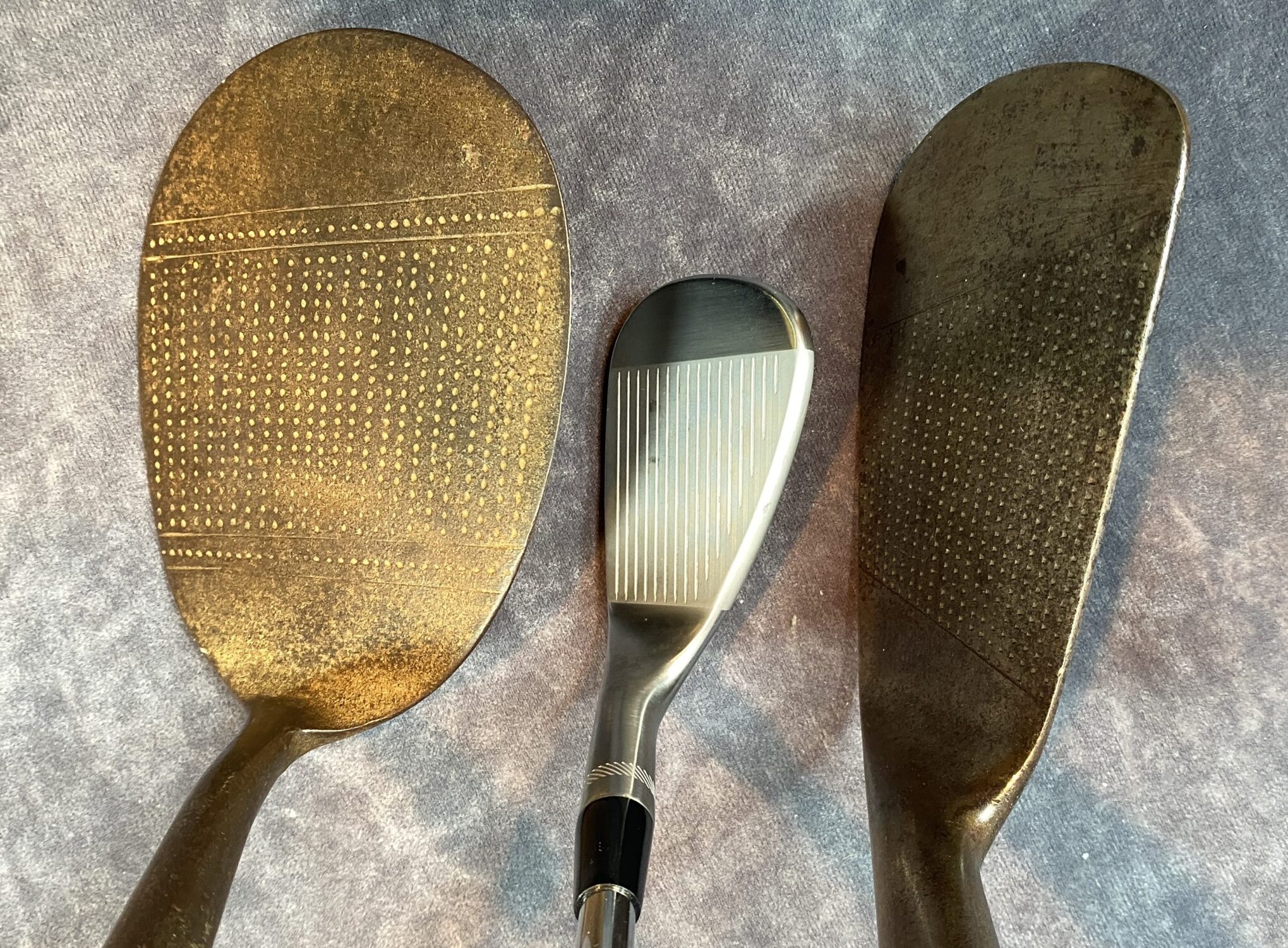
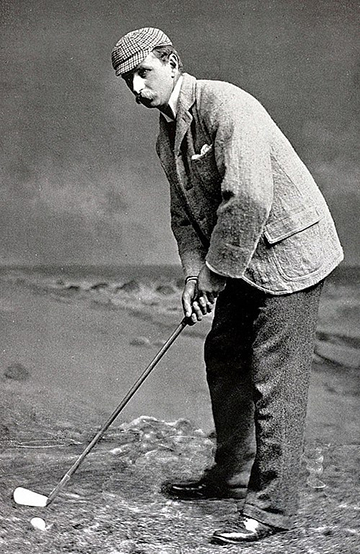
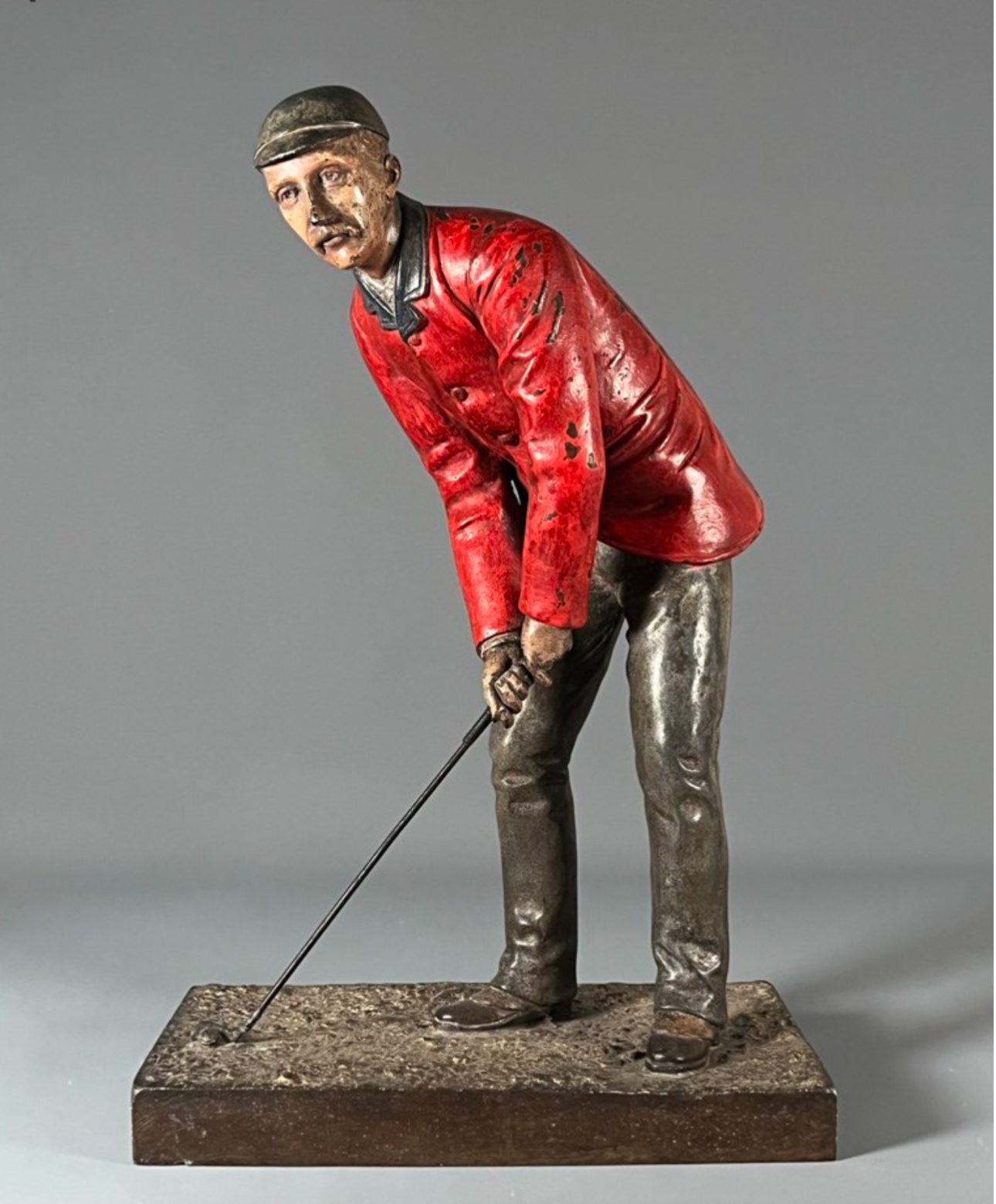
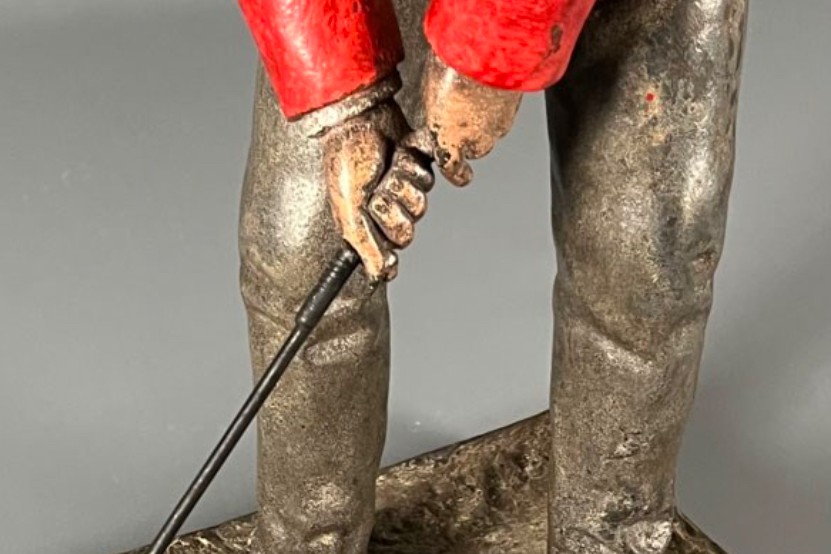

ghs virtual golf museum
John Laidlay Bronze c 1890
In the world of golf sculpture, statuary’s Holy Grail is often considered to be the painted bronze of John Laidlay c. 1890 based on its appeal and rarity.
Laidlay was a top golfer of the era having won the British Amateur in 1889, and 1891, was runner-up in 1888, 1890 and 1893 and also runner-up in the British Open in 1893.
Significantly, todays nearly ubiquitous “Vardon Grip” was learned by Vardon from Laidlay, who is widely credited as having invented the overlapping grip, though even Laidlay once recounted that he started using it in 1890 or 1891 in adapted form after seeing an unnamed amateur from Muirfield with an unusual grip. In a letter dated 1939, Laidlay writes that “…it was looked on as most foolish for a good young golfer to have done it” and “that it caused much amusement which I did not mind, and felt it unlikely any golfer would copy”. In regard to his precise overlapping grip, “Personally, I have not the least doubt that I was the first person to use the grip.”
Note that the photo (top) has Laidlay using the overlapping grip, but that the highly detailed grip of the stature still has him using a ten finger in the palms grip before his conversion.
The piece is a striking example of the work of artist G. Gonella of Dundee given it is a polychrome having painted elements which was essentially an unheard-of practice in the 19th century. It is signed by the artist including the #3 in the far corner. Only one other such piece is known to exist and is numbered 4, with the expectation that perhaps as few as four were ever produced.
It is 16 1/2″ tall and weighs 12 pounds.
(Current value – $30,000).
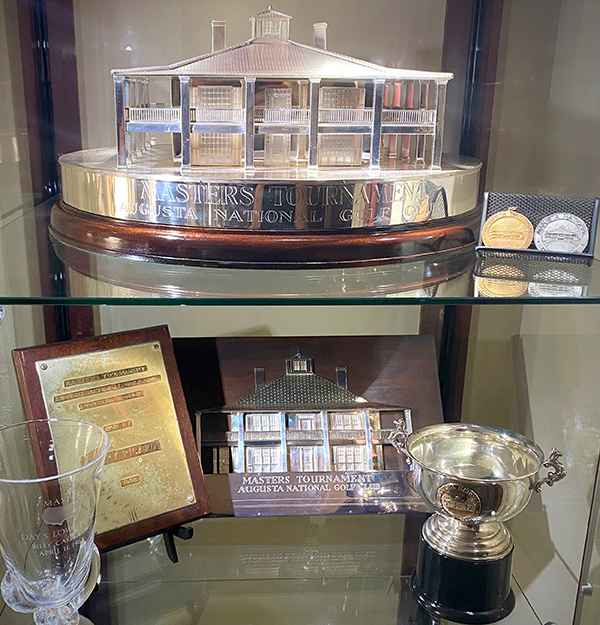
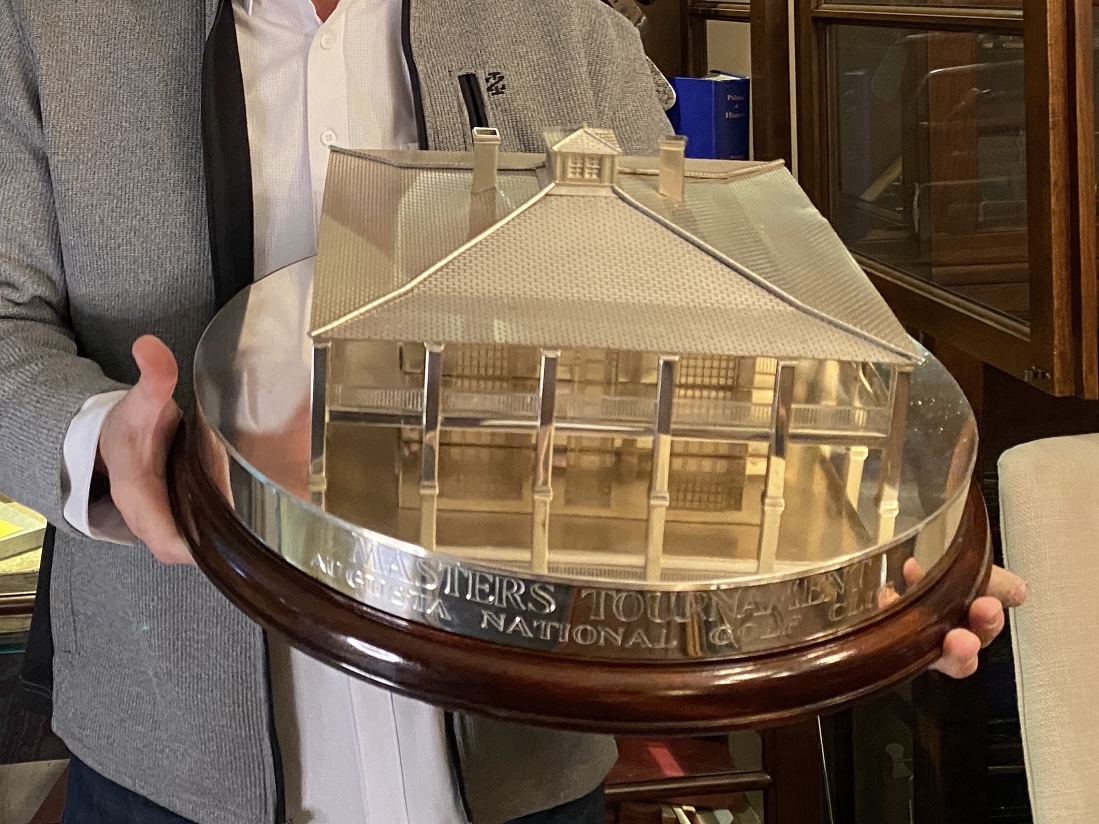
ghs virtual golf museum
Masters Tournament Trophies and Awards
One of our members personal tributes to the Masters Tournament.
On the upper shelf is an oversized example of the club’s historic clubhouse trophy. The original in the ANGC clubhouse was created in 1961 and is 4′ in diameter and 132 pounds. Since 1993, a relatively small replica is awarded to yearly champions (and some past champions).
This example, hallmarked 1988, is the first of only a few other large replicas produced for museums. It is reported to have initially traveled to Japan to promote the Masters as the appreciation of the game was soaring at that time. It is 20″ in diameter, almost 10″ tall, is 32 pounds, and comes with a massive green display/travel box.
To its right are a winners gold medal (that won by Craig Wood in 1941, who was the victim of Gene Sarazens 15th hole double eagle in 1935) in the original medal style and a later runner-up silver medal in the style that began c 1978.
On the second shelf is one example of a number of different Masters crystal awards, this for “Days Low Score” (Billy Casper, Jr. -April 11, 1968). Next is the first style of winner’s plaques (gold lettering on a gold-plated silver background – for Henry Pickard, 1938). In the center is the updated bas-relief clubhouse style of winner’s plaque (from 1960 through 1992 in two different iterations. This particular trophy was intended for a future winner but was decommissioned once the 3-D clubhouse trophies appeared in 93). The low amateur who also makes the 36-hole cut (if there is one who does) since 1952 receives a sterling trophy (this example for the great amateur Harvey Ward).
Not included in this display is one of the Silver Box humidors presented from 1954 and intermittently up to 1992 as an additional gift. Nor is the “Gold Locket” given to winners since 1952.
The iconic Masters Green Jacket has been the signature award having been presented to the winner since 1949 (Sam Snead). Members have worn the green jacket beginning in 1937. Augusta National has long noted its dissatisfaction with jackets leaving the premises apart from allowing a first-time winner the thrill of keeping it for that first year before he returns it and thereafter only wears it on the grounds.
Ghs virtual golf museum
Bobby Jones Autographed Golf Ball
Golf balls signed by Bobby Jones are rare. In fact, the 2004 edition of “Gilchrist’s Guide to Golf Collectibles” listed no known examples. Since then, only a few professionally authenticated examples, in various conditions, have been sold at auction. While judged authentic, none of them have had the extraordinary provenance that accompanies this GHS members gem.
In September 1935 four boys from England, sponsored by Rotarians, traveled by steamship to experience a full month in America. At the end of their trip, while in Georgia, they were presented “golf balls autographed by Bobby Jones and mounted on silver bases” at the Atlanta Rotary Club. No less than four separate newspapers reported in detail the presentation of these gifts to the boys. This ball was obtained from the family of one of those young ambassadors visiting from England named Richard Arthur Miles of Milnthorpe who is specifically mentioned.
The ball is of a type that Jones would have played at the time, a Spalding double black dot TOURNAMENT ball and which is signed Robt T Jones Jr. The silver plinth is engraved Atlanta Rotary club 1935.
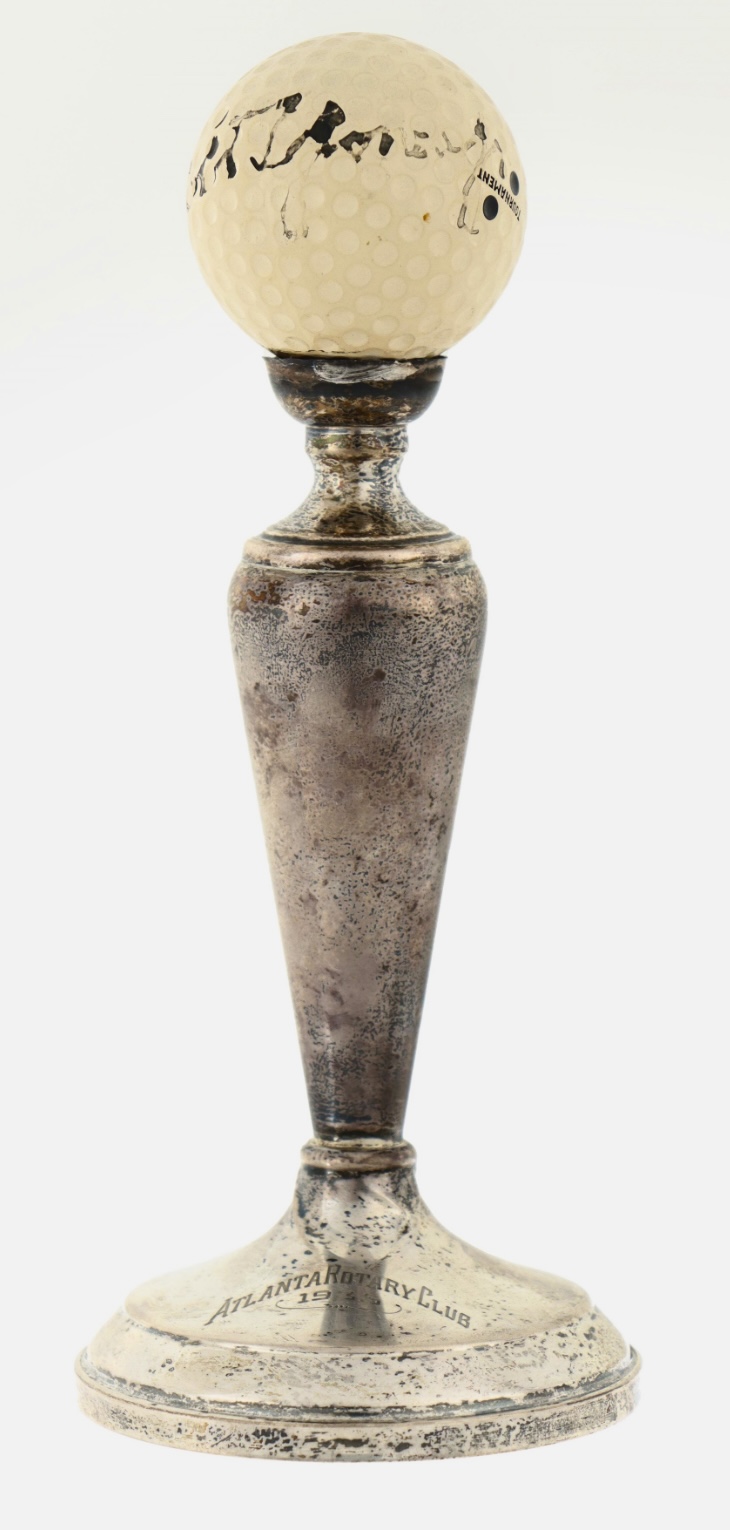
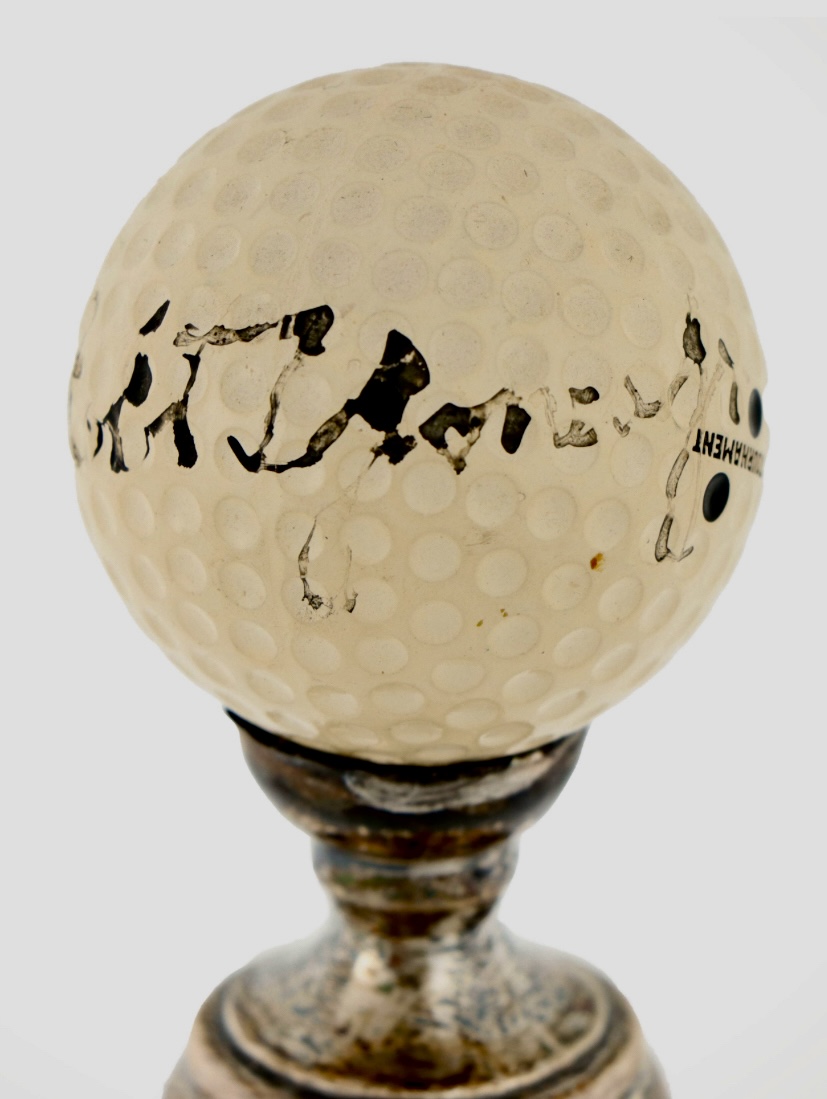
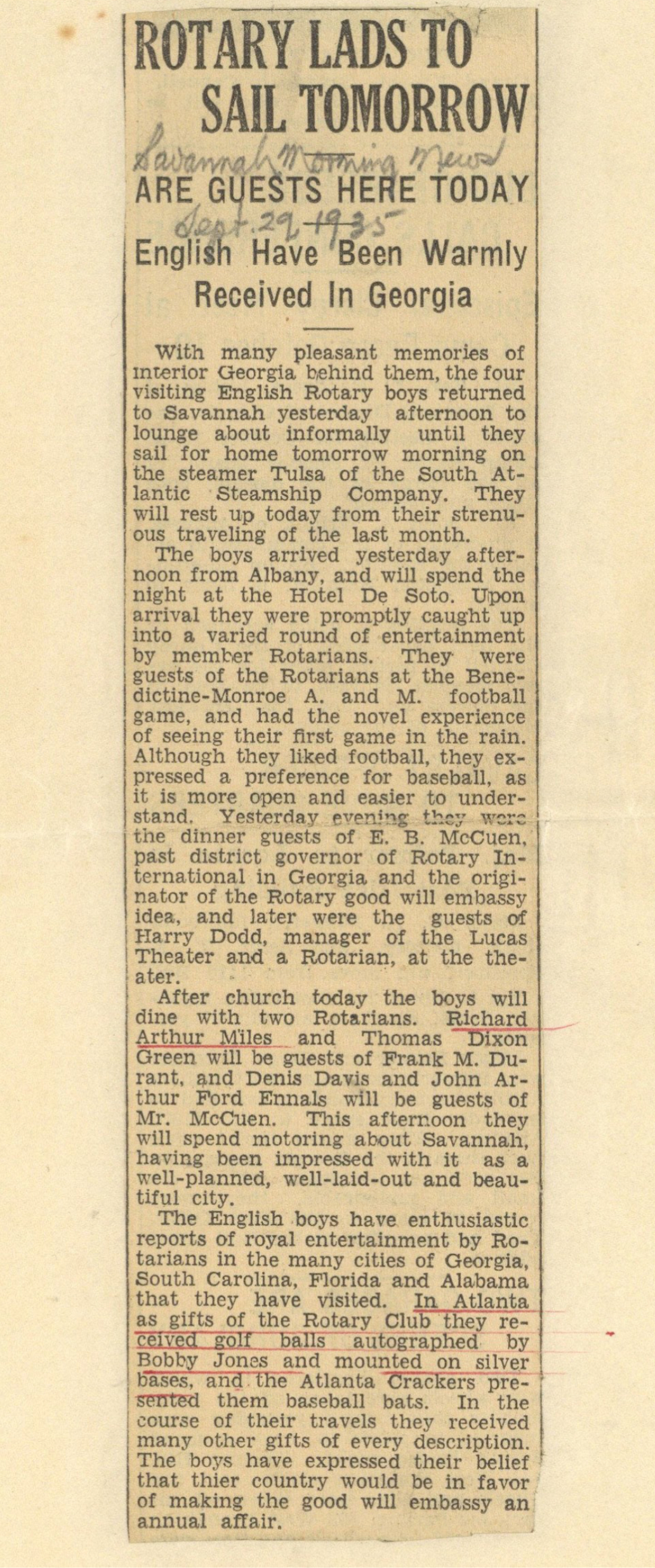
Ghs virtual golf museum
Super-Giant
Niblick & Mashie
The usual “giants” produced intermittently by several different makers between about 1905 and into the 1920’s were only moderately larger than regular irons and were playable. They are not uncommon but have wonderful appeal.
Club expert Jeff Ellis proposes that a true “giant niblick” has between 3 1/4″ and 3 7/8″ of face depth at its deepest point, while a Dreadnought niblick or Junior Mammoth Niblick is usually between 2 1/2″ and 3″ tall. In person, super-giants look more and more massive with even small incremental increases in size. Giant Niblicks are more common than giant irons and putters.
Pictured here, flanking Titleist’s newest Vokey SM10 wedge, are a super-giant niblick made by J. P. Cochrane which measures over 4 1/2″ tall and 5 3/4″ long, and a super-giant mashie of extreme weight, made by W.L. Ritchie measuring 3 3/4″ tall and 5 1/2″ long.
Some believe that such rare, true giants, are so unwieldy that they may have been for sales display or to demonstrate a maker’s craftsmanship.


Ghs virtual golf museum
Super-Giant
Niblick & Mashie
The usual “giants” produced intermittently by several different makers between about 1905 and into the 1920’s were only moderately larger than regular irons and were playable. They are not uncommon but have wonderful appeal.
Club expert Jeff Ellis proposes that a true “giant niblick” has between 3 1/4″ and 3 7/8″ of face depth at its deepest point, while a Dreadnought niblick or Junior Mammoth Niblick is usually between 2 1/2″ and 3″ tall. In person, super-giants look more and more massive with even small incremental increases in size. Giant Niblicks are more common than giant irons and putters.
Pictured here, flanking Titleist’s newest Vokey SM10 wedge, are a super-giant niblick made by J. P. Cochrane which measures over 4 1/2″ tall and 5 3/4″ long, and a super-giant mashie of extreme weight, made by W.L. Ritchie measuring 3 3/4″ tall and 5 1/2″ long.
Some believe that such rare, true giants, are so unwieldy that they may have been for sales display or to demonstrate a maker’s craftsmanship.


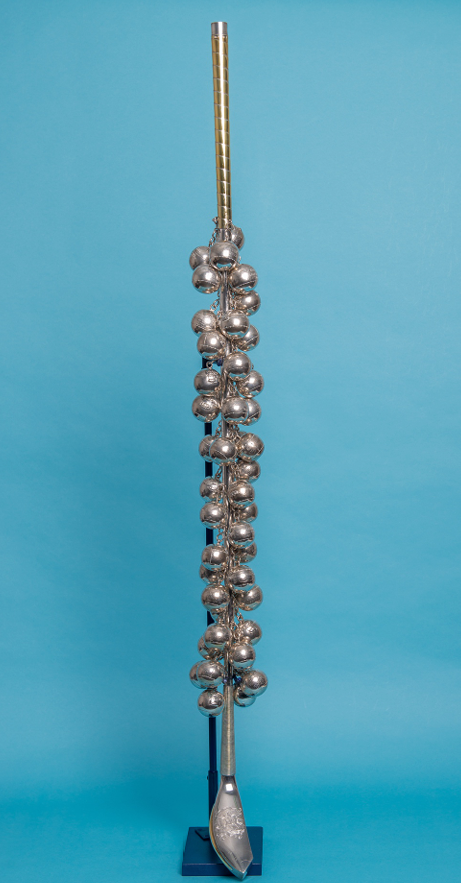
ghs virtual golf museum
MORE ON THE WAY!

Eras of Golf Ball Collecting
1940s-Current Era
Collectors of balls for this period have many choices should they wish to focus on a particular niche, as these include balls with logos of from anything to universities to sports clubs and everything in between; corporate brands (logos); images of any number of things from animals to birds; joke balls, balls with the names of professional golfers, sometimes in script; autographed balls, itself a category as collectors often like to build a display of balls that the golfer him or herself has signed.

Eras of Golf Ball Collecting
1940s-Current Era
Collectors of balls for this period have many choices should they wish to focus on a particular niche, as these include balls with logos of from anything to universities to sports clubs and everything in between; corporate brands (logos); images of any number of things from animals to birds; joke balls, balls with the names of professional golfers, sometimes in script; autographed balls, itself a category as collectors often like to build a display of balls that the golfer him or herself has signed.
